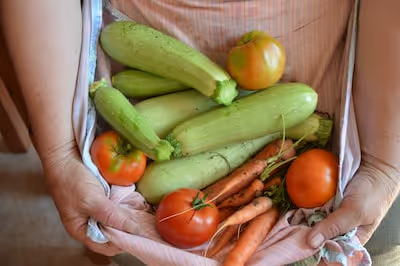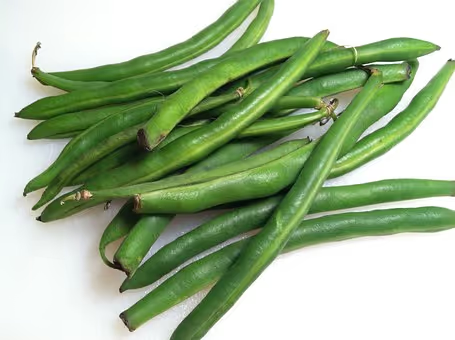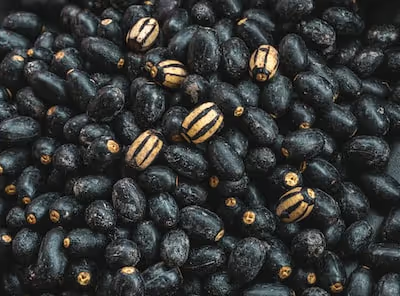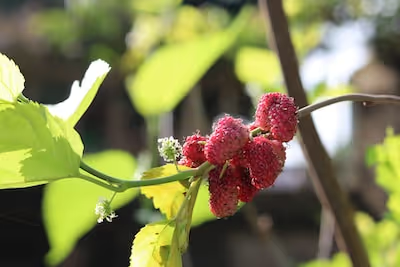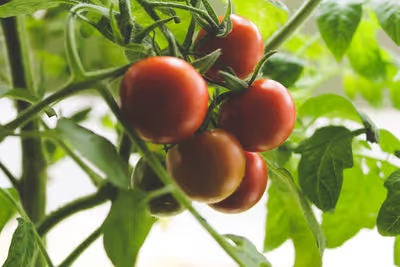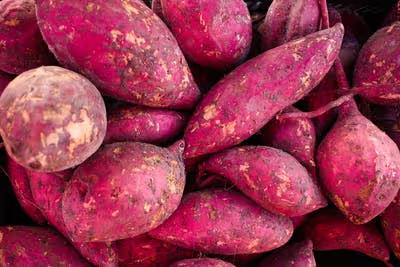Growing Daikon: A Simple Guide to Crisp, Flavorful Radishes
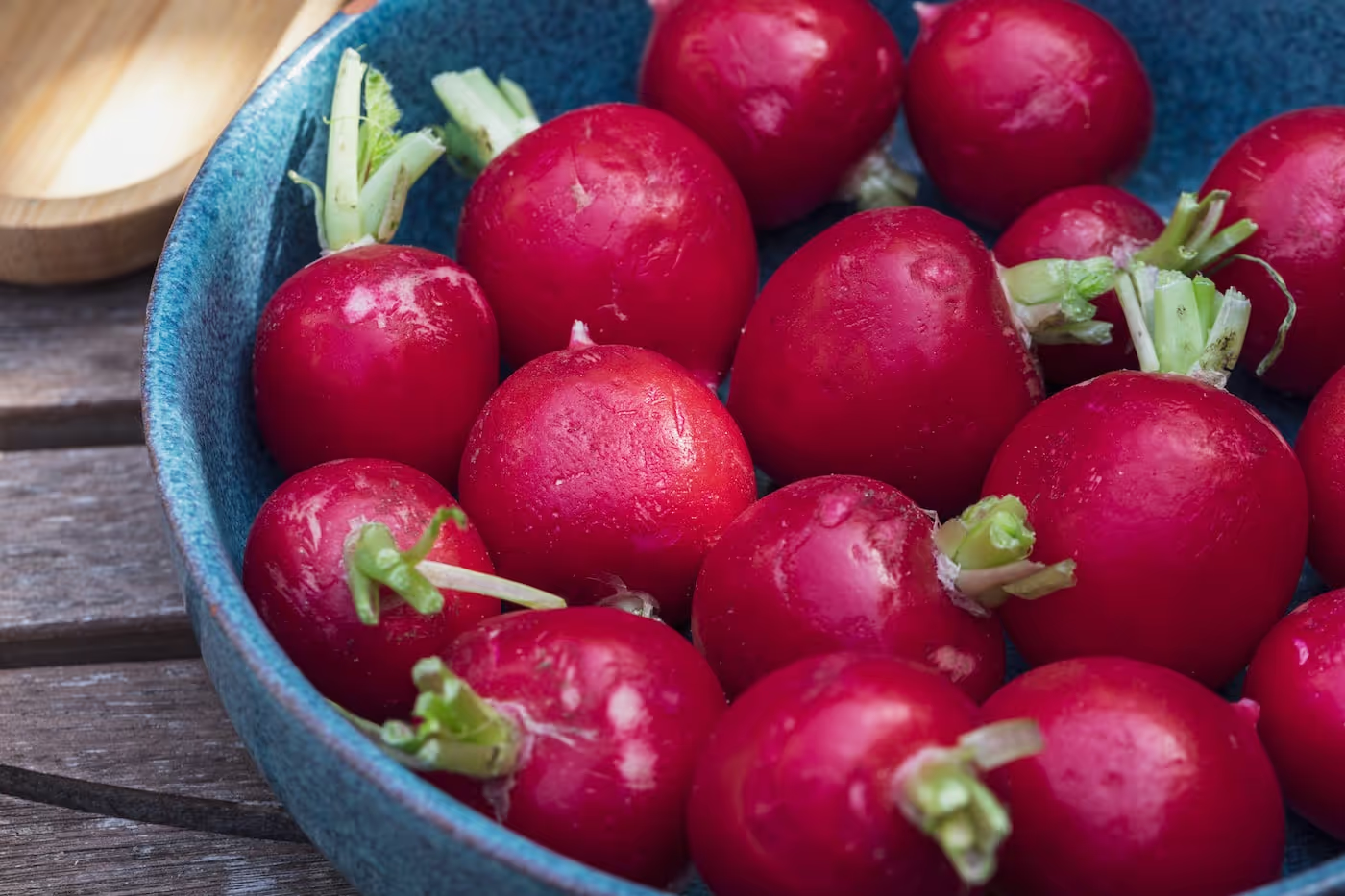
Growing Daikon
Growing daikon rewards your garden with sharp crunch, refreshing spice and vibrant flavor. Sow seeds directly into loose, well-drained soil, giving each plant a good 4-6 inches of elbow room and plenty of sunshine. Keep the bed consistently watered and weed-free, and your daikon harvest will thrive. Curious about timing, companion plants, or harvesting tricks? Read on—your next spicy radish crop awaits.
Cheatsheet: Grow Crisp, White Daikon Like a Pro
🌱 Best Planting Time
- Spring or late summer: soil 50–75°F (10–24°C)
- Matures in 55–70 days
🌾 Soil & Spacing
- Loose, deep loam, pH 5.8–6.8
- Clear rocks, debris > get straight roots
- Rows: 12–18 in (30–45 cm) apart
- Thin seedlings: 4 in (10 cm) apart
💧 Watering & Care
- Keep moist, never soggy
- Mulch to trap moisture & stop weeds
- Avoid crowding: prevents root distortion
🌞 Sun Requirements
Full sun (6+ hrs) for best roots; part shade tolerated.
🦠 Pests & Problems
- Rotate plantings yearly
- Watch for flea beetles, root maggots
- Use row cover if needed
✂️ Harvest Tips
- Ready when roots are 8–16 in (20–40 cm) long
- Loosen soil with fork before pulling
- Use quickly; chill for up to 2 weeks
🍽️ Nutrition & Self-Sufficiency
- Low cal, high C, digestive enzymes
- One plant = up to 2 lbs (900 g) of food
- Pickle, ferment, roast, eat raw
🛠️ Tools and Products You'll Need
- Daikon seeds
- Compost
- Garden fork
- Watering can
- Mulch
- Row cover (optional)
🔢 Quick Steps
- Prepare bed: Loosen soil 12 in (30 cm) deep, mix compost
- Sow seeds ½ in (1.2 cm) deep, 1 in (2.5 cm) apart
- Thin to final spacing at 2 in (5 cm) tall
- Water weekly; mulch after sprouting
- Weed and watch for pests
- Harvest before roots bolt or split
Fact: Japan’s daikon harvest exceeds 500,000 tons/year.
-
Growing Daikon: soil, season, spacing
I start Growing Daikon wherever I can give roots a deep, loose runway, because cramped ground twists them like question marks. Sandy loam wins, though I have coaxed straight spears from clay after a fall of compost and a pass with the broadfork.
Target pH lands at 6.0 to 7.0, and I keep salts low and organic matter steady so roots stay crisp. If a bed has compaction, daikon helps break it while feeding soil microbes with juicy taproot exudates.
Soil prep that sets the table
I rake in 2 to 3 cm of mature compost and a light, balanced fertilizer, about 0.5 to 1 pound N per 1000 square feet, then water well before sowing. Too much nitrogen grows giant tops and skinny roots.
Depth matters. I loosen to 25 to 30 cm so the tap can run without kinking, then level the bed so water does not pool.
Sowing for straight, sweet roots
Seed when soil hits 50 to 85 F, 10 to 29 C, for quick sprout in 3 to 7 days. I plant 1.3 cm deep, thin to 10 to 15 cm in row, and keep 30 to 45 cm between rows for airflow and harvest ease.
For full-length types, I skip containers. For half-longs, a deep tote with 30 cm of media works if it drains fast and stays evenly moist.
Water and feeding without the splits
Even moisture makes glassy texture. I give about 2.5 cm per week, more in heat, and I never let the bed swing from dry to soaked or roots split like firewood.
Side-dress once at 3 to 4 weeks with a light hand. Overfeeding late sends sugar to tops and hollows the core.
Timing and climate that beat bolting
Daikon likes cool. I seed late summer for fall harvest, or early spring as soon as I can work soil, since heat and long days push flowering.
Best growth sits at 50 to 75 F, 10 to 24 C. I pull early in heat and grow longer in the cool shoulder seasons.
Varieties worth planting
- Minowase Summer Cross: long white, fast at 45 to 60 days, clean texture.
- Miyashige White: classic autumn type, 60 to 75 days, steady in cool weather.
- KN-Bravo: purple skin, pale lavender flesh, mild flavor, great for salads.
- April Cross F1: cylindrical, bolt tolerant for spring, dense flesh.
- Shunkyo Semi-Long: red, 30 to 45 days, compact beds and containers.
- Alpine: half-long white, tight spacing, reliable in small spaces.
I seed two types per bed so I get early crunch and later bulk. Hybrids give uniform roots for markets, while open-pollinated lines carry deeper flavor in my fall kitchen.
Pest and disease defense that actually works
Flea beetles chew shot holes fast. I lay light row cover at sowing, seal edges, and remove for harvest only.
Cabbage maggot flies peak in spring. I target late summer sowings, use yellow sticky cards to monitor, and keep crop residue off the bed.
If pressure spikes, I rotate brassicas for 3 to 4 years, lime to pH 7.2 where clubroot lurks, and water in at the base to keep foliage dry.
Organic tools that help include fine-mesh covers, neem or spinosad for labeled pests, and kaolin clay as a feeding deterrent. Always confirm labels for brassicas and preharvest interval.
Harvest, storage, and flavor
I pull at market size, not max size, since oversized roots can hollow. For most types that means 30 to 45 cm length, 5 to 8 cm shoulder, 45 to 70 days from seeding.
Loosen with a fork, lift straight, trim tops to 1 cm, and do not wash if storing long. Field heat off quickly keeps snap.
SARE reports that oilseed and tillage radish can scavenge 50 to 150 pounds of nitrogen per acre, then release it to the next crop as residues break down. That is soil work you can taste in greens and roots.
USDA and UC postharvest guides place daikon at 32 F, 0 C, and 95 to 100 percent relative humidity for 2 to 4 weeks of high quality. At home, a perforated bag in the crisper gets close.
Troubleshooting quick fixes
- Spongy texture: harvest earlier, water evenly, switch to fall timing.
- Forked roots: shallow compaction or stones, prep deeper and rake clean.
- Hollow heart: too much late nitrogen or rapid growth swings, feed lighter and steady irrigation.
- Hot flavor: heat stress and drought, lock in fall plantings and irrigate on schedule.
- Greening at shoulder: hill slightly or mulch to cover the crown.
Companion and cover crop angles
I interplant with lettuces that finish before daikon bulks, and I follow daikon with hungry greens that use released nutrients. As a cover crop, tillage types drill into tight layers and leave winter-killed mulch.
For soil health, I mix with oats to catch nitrogen and add carbon. Terminate before roots turn woody so breakdown stays smooth.
Buying guide: seeds and gear that save headaches
- Seed sizing: pelleted seed drops clean in seeders, handy for long rows and even spacing.
- Days to maturity: pick 45 to 55 day types for spring, 60 to 75 day types for fall bulk.
- Bolt tolerance: look for spring-suited lines if heat arrives early.
- Root form: half-long for containers or shallow beds, full-length for deep loam.
- Row cover: 0.5 to 0.6 oz per square yard fabric with hoops and tight edges keeps flea beetles out.
- Soil thermometer and pH kit: cheap tools that pay back with even stands and clean flavor.
For soil inputs, I favor compost and a mild organic blend. Big nitrogen spikes feed tops, not roots.
Cooking notes from the garden bench
I like early roots raw with salt, later roots in quick pickles, and peels saved for stocks. Greens cook like mustard, bright and peppery, and they freeze well after a quick blanch.
For sweetness, I chill harvested roots overnight. Starches settle and that snap gets addictive.
My field-tested rhythm
Spring: sow as soon as soil hits 50 F, 10 C, protect with cover, harvest young before heat climbs. Summer: skip midsummer in hot zones or switch to fast half-longs under 30 percent shade cloth.
Fall: sow 6 to 8 weeks before first frost, pull big and store cold. Winter: in mild zones, sow late and harvest as needed, since soil is a fantastic refrigerator.
Numbers I trust for Growing Daikon
- Planting depth: 0.5 inch, 1.3 cm.
- In-row spacing: 4 to 6 inches, 10 to 15 cm.
- Row spacing: 12 to 18 inches, 30 to 45 cm.
- Germination window: 3 to 7 days at 50 to 85 F, 10 to 29 C.
- Best growth: 50 to 75 F, 10 to 24 C.
- Harvest window: 45 to 75 days, depending on variety and season.
Sources that keep me honest
SARE, Managing Cover Crops Profitably, on nitrogen capture and bio-drilling by radish. UC IPM and regional Extension bulletins on flea beetle exclusion with row cover and rotation timing.
Cornell Vegetable Program and Midwest universities on spacing and cool-season scheduling. USDA Handbook 66 and UC Postharvest Center on cold storage temperature and humidity for radish.
Frequently Asked Questions About Growing Daikon Radishes
What's the best time to plant daikon radishes?
The ideal planting period for daikon radishes is late summer to early fall, generally 4-6 weeks before the first expected frost date. Planting during this window allows the radishes to develop in cooler temperatures (around 50-65°F or 10-18°C), yielding a mild, crisp flavor.
How deep should daikon seeds be planted?
Sow the seeds approximately ½ inch (1.25 cm) deep into loose, well-draining soil. Proper depth facilitates robust germination and promotes healthy root formation.
How far apart should daikon radishes be spaced?
To allow adequate room for root expansion, space seedlings about 4-6 inches (10-15 cm) apart within rows, with rows set at 12-24 inches (30-60 cm) apart. Proper spacing reduces competition for nutrients and encourages full root development.
How much sunlight do daikon plants require?
Daikon radishes thrive under full sunlight exposure, ideally receiving at least 6 hours or more daily. Adequate sunlight encourages vigorous leaf growth and robust root formation.
How often should daikon radishes be watered?
Water daikon regularly, maintaining slightly moist soil that's neither soggy nor dry. Typically, 1 inch (2.5 cm) of water weekly suffices. Consistent moisture prevents roots from splitting and becoming overly pungent.
When and how should daikon radishes be harvested?
Harvest daikon radishes roughly 45-70 days after planting, depending on the variety and desired root size. Carefully loosen the soil with a gardening fork around each radish, then gently lift them to avoid damaging the roots.
What common pests affect daikon radishes, and how can they be managed?
Pests like flea beetles, aphids, and root maggots can impact daikon crops. Manage these pests organically by applying floating row covers, regularly inspecting plants, and employing beneficial insects or insecticidal soaps if infestations occur.
Can daikon radishes grow in containers?
Yes, daikon radishes adapt well to container gardening. Choose deep pots (at least 12-14 inches or 30-35 cm deep) filled with nutrient-rich soil, ensuring adequate drainage. Water consistently to maintain soil moisture and nutrients throughout the growing period.
Growing Daikon rewards you with more than just crisp, cool slices for your kitchen. With the right timing, steady moisture, and loose, fertile soil, this radish repays a little attention with generous harvests. Pull them while they’re young for delicate spice, or let them size up for heartier stews and pickles. Rotate crops, break up that soil, and you’ll keep pests guessing and your beds thriving.
There’s a certain satisfaction in watching those sturdy greens push out of the earth each season. Growing Daikon keeps your soil healthy, your palate sharp, and your table varied—proof that simple crops still have plenty to teach us. If you’re looking to expand your root crop lineup, consider reading about how to grow jicama or how to grow celeriac. The garden never runs out of surprises.
The Prepper's Guide to Daikon Radishes: Sustaining Nutrition and Self-Reliance
Resilient Crop Choice
- Fast-growing: Daikon radishes mature in 50-60 days, ideal for quick crop cycles.
- Cold-tolerant: Grows reliably at temperatures as low as 28°F (-2°C), suitable for cooler climates.
- Soil adaptability: Thrives in a range of soils, including nutrient-poor or clay-heavy conditions, breaking up compacted layers and improving fertility.
Long-term Storage and Preservation
- Root cellar storage: Store harvested daikon at 32-40°F (0-4°C) with humidity around 90-95% for up to four months without spoilage.
- Drying technique: Slice daikon thinly, dry at low heat (130°F/54°C) for 6-8 hours; store airtight to maintain nutrition for soups, stews, and snacks.
- Pickling preservation: Quick fermentation or vinegar pickling extends daikon shelf life beyond 12 months and boosts probiotic content.
High-Value Nutritional Benefits
- Vitamin-rich: High in vitamin C for immunity and potassium for cardiovascular health.
- Digestive aid: Contains beneficial enzymes for gut health and efficient nutrient absorption.
- Calorie-efficient: Offers essential nutrients (18 kcal per 100 grams) without excessive calorie consumption.
Seed Harvesting Strategies
- Allow healthiest daikon plants to bolt, flower, and set seed pods.
- Collect mature, brown seed pods carefully; dry completely after harvesting.
- Store seeds cool, dark, and airtight for viable planting up to five years.
Useful Daikon Radish Applications on Your Homestead
- Animal feed supplement: Nutritious leaves and roots feed poultry, rabbits, and livestock.
- Cover crop integration: Daikon roots penetrate deeply, aerate soil, increase water infiltration, and prepare ground for future crops without mechanical tilling.
- Medicinal poultice: Grated fresh daikon mixed with honey forms a natural remedy for mild skin irritation or insect bites.
Find out which plants will thrive in your garden!
Answer a few fun questions and get custom plant recommendations perfect for your space. Let’s grow something amazing together!

start your season
